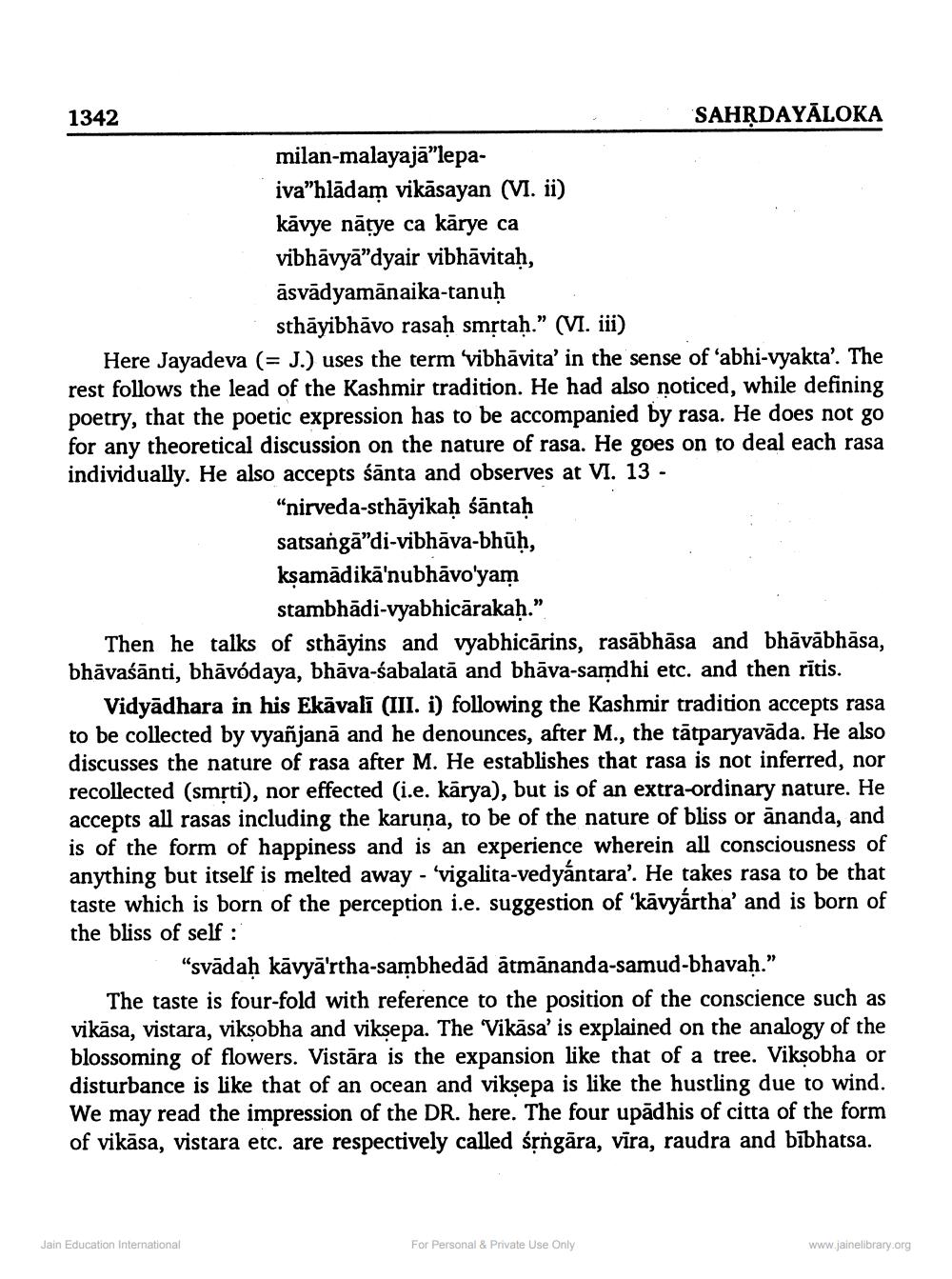________________
1342
SAHĶDAYĀLOKA milan-malayajā”lepaiva”hlādam vikāsayan (VI. ii) kāvye nāțye ca kārye ca vibhāvyā”dyair vibhāvitaḥ, āsvādyamanaika-tanuḥ
sthāyibhāvo rasaḥ smộtah.” (VI. iii) Here Jayadeva (= J.) uses the term vibhāvita' in the sense of abhi-vyakta’. The rest follows the lead of the Kashmir tradition. He had also noticed, while defining poetry, that the poetic expression has to be accompanied by rasa. He does not go for any theoretical discussion on the nature of rasa. He goes on to deal each rasa individually. He also accepts śānta and observes at VI. 13 -
"nirveda-sthāyikaḥ śāntah satsangā"di-vibhāva-bhūḥ, kşamādikā'nubhāvo'yam
stambhādi-vyabhicārakah.”. Then he talks of sthāyins and vyabhicārins, rasābhāsa and bhāvābhāsa, bhāvaśānti, bhāvódaya, bhāva-sabalatā and bhāva-samdhi etc. and then rītis.
Vidyādhara in his Ekāvalī (III. i) following the Kashmir tradition accepts rasa to be collected by vyañjan, and he denounces, after M., the tātparyavāda. He also discusses the nature of rasa after M. He establishes that rasa is not inferred, nor recollected (smrti), nor effected (i.e. kārya), but is of an extra-ordinary nature. He accepts all rasas including the karuna, to be of the nature of bliss or ānanda, and is of the form of happiness and is an experience wherein all consciousness of anything but itself is melted away - 'vigalita-vedyantara'. He takes rasa to be that taste which is born of the perception i.e. suggestion of 'kāvyártha' and is born of the bliss of self :
“svādah kāvyā'rtha-sambhedād ātmānanda-samud-bhavah.” The taste is four-fold with reference to the position of the conscience such as ikasa, vistara, viksobha and viksepa. The Vikasa' is explained on the analogy of the blossoming of flowers. Vistāra is the expansion like that of a tree. Viksobha or disturbance is like that of an ocean and viksepa is like the hustling due to wind. We may read the impression of the DR. here. The four upādhis of citta of the form of vikāsa, vistara etc. are respectively called śrngāra, vīra, raudra and bībhatsa.
Jain Education International
For Personal & Private Use Only
www.jainelibrary.org




